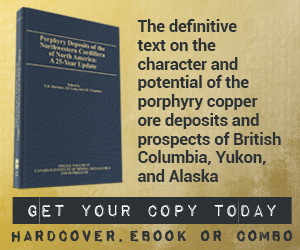Library Magazine Articles The new NI 43-101: Compliance made easier and less costly
The new NI 43-101: Compliance made easier and less costly
Robert Holland, Craig Waldie, Jim Whyte & Luc Arsenault - Jun 2011
On April 8, 2011, the Canadian Securities Administrators (CSA) published new versions of National Instrument 43-101 Standards of Disclosure for Mineral Projects, Form 43-101F1 Technical Report, and Companion Policy 43-101CP Companion Policy (collectively NI 43-101). The new NI 43-101 will replace the existing 2005 version and, subject to obtaining all necessary ministerial approvals, is expected to come into force on June 30, 2011.
It has been 10 years since NI 43-101 was first adopted in February 2001 and this new version represents its first substantive review. In 2009, extensive stakeholder consultations and focus group discussions were held, which helped identify key issues and concerns. In April 2010, the CSA published proposed changes to NI 43-101 and received 50 comment letters from stakeholders resulting in some non-material revisions and clarifications to the proposed rules. The CSA believes that the new version will continue to be one of the most effective and transparent mining disclosure regimes in the world.
The objective of the new version is to maintain investor protection while making compliance easier and less costly for mining issuers. CSA has preserved the core principles of NI 43-101 while eliminating or reducing the scope of certain requirements, providing some flexibility to issuers and Qualified Persons, reflecting changes in the industry, and clarifying areas not having the desired effect.
Summary of key changes
Following are some of the key changes that will be implanted with the new version of NI 43-101.
Addition or amendment of several definitions including:
- Adding “acceptable foreign code,” and amending “professional association” and “qualified person” to provide an objective test.
- Amending “historical estimate” to permit disclosure of third-party estimates made after 2001.
- Expanding “preliminary economic assessment” to include preliminary economic analyses after the completion of a prefeasibility study.
- Incorporating by reference the definitions of “preliminary feasibility study” and “feasibility study” from the CIM Definition Standards.
Clarification of existing interpretations applicable to all disclosure by:
- Restricting disclosure of economic analyses of exploration targets and historical estimates.
- Restricting disclosure of gross metal or mineral value and metal or mineral equivalent grades.
- Requiring that disclosure of historical estimates always be accompanied by cautionary language and certain other information.
- Requiring cautionary language be disclosed with equal prominence.
- Allowing a qualified person to approve disclosure as an alternative to preparing or supervising the preparation of the information.
Amendment of the obligation to file a technical report by:
- Eliminating the requirement to file updated certificates and consents for subsequent triggers for a previously filed technical report.
- Restricting the trigger for the filing of a technical report with a preliminary short-form prospectus to situations where there is a material mineral resource, mineral reserve or preliminary economic assessment that is not supported by a current technical report.
- Expanding the technical report trigger to include any first-time written disclosure of mineral resources, mineral reserves or preliminary economic assessments.
- Allowing a conditional six-month filing delay for a technical report supporting mineral resources, mineral reserves or a preliminary economic assessment if these estimates are supported by a current technical report filed by another issuer.
- Elimination of the independent technical report trigger for producing issuers in most situations.
- Exemption for royalty or similar interest holders from the requirement to file a technical report under certain conditions.
- Elimination of Appendix A as a prescriptive list of foreign associations and designations.
- Revisions to the form for technical reports to make the form more adaptable for advanced-stage and producing properties
- Substantial changes to the companion policy to track the sections of NI 43-101 to which it refers, remove or update old guidance and add new guidance.
For more information, please see the April 8, 2011 CSA Notice Repeal and Replacement of NI 43-101 and the revised instrument, form and companion policy posted on the websites of CSA members, including: www.bcsc.bc.ca; www.osc.gov.on.ca; and www.lautorite.qc.ca.
The views expressed in this article are those of the authors and do not necessarily represent the views of the BCSC, OSC or AMF.
Authors
Robert Holland is chief mining adviser with the British Columbia Securities Commission. Craig Waldie and Jim Whyte are both senior geologists with the Ontario Securities Commission Luc Arsenault is a geologist with the Autorité des Marchés Financier.
The authors are responsible for NI 43-101 compliance reviews of prospectuses, technical reports and other regulatory filings of mining companies connected to British Columbia (Holland), Ontario (Waldie and Whyte) and Quebec (Arseneault).

.png)
